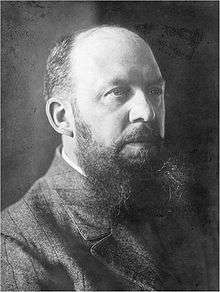Georg Kelling

Georg Kelling (7 July 1866 in Dresden – 14 February 1945) was a German internist and surgeon who was a laparoscopy pioneer and in 1901 performed the first laparoscopic surgery on a dog .[1]
He studied medicine at the Universities of Leipzig and Berlin. He earned his medical doctorate in 1890, and later worked as a physician at the city hospital in Dresden. In the 1890s, Kelling devised an esophagoscope [2]
Kelling specialized in gastrointestinal physiology and anatomy. He is credited with performing the first laparoscopic examination, a procedure he referred to as "celioscopy". In 1901 he performed the procedure on the abdomen of a dog using a Nitze-cystoscope. Prior to cystoscopic viewing of the abdomen, Kelling insufflated it with filtered air via a device known as a trocar. Insufflation was used to create a pneumoperitoneum in order to prevent intra-abdominal bleeding.
See also
References
- ↑ General Surgery News
- ↑ Litynski GS. "Laparoscopy--the early attempts: spotlighting Georg Kelling and Hans Christian Jacobaeus". JSLS. 1: 83–5. PMC 3015224. PMID 9876654.
- Schollmeyer T, Soyinka AS, Schollmeyer M, Meinhold-Heerlein I (November 2007). "Georg Kelling (1866-1945): the root of modern day minimal invasive surgery. A forgotten legend?". Archives of Gynecology and Obstetrics. 276 (5): 505–9. doi:10.1007/s00404-007-0372-y. PMID 17458553.
- Google-translated biography of Georg Kelling